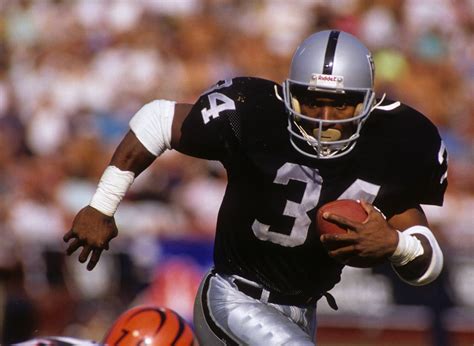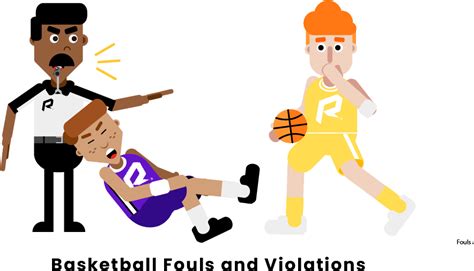
The NBA’s much-maligned “take foul” rule, often criticized for disrupting game flow and incentivizing transitions fouls, is officially gone, replaced by stricter penalties aimed at preserving fast-paced action and rewarding offensive play. The change, effective immediately for the 2024-2025 season, mandates that teams committing transition take fouls – those designed solely to prevent scoring opportunities without a legitimate attempt to play the ball – will now be penalized with a free throw for the offended team and continued possession of the ball.
The NBA Board of Governors overwhelmingly approved the rule change in July 2022 for a trial period, and after a successful season of implementation and evaluation, the rule has been permanently adopted. “The take foul, in that it was just an understood way to concede transition, was something that we wanted to address,” said Monty McCutchen, the NBA’s head of referee development, during the initial announcement of the trial rule.
The alteration seeks to eliminate the strategic, yet aesthetically unpleasing, tactic of intentionally fouling a player during a fast break to halt momentum and reset the defense. Previously, the consequence for such a foul was simply possession of the ball being awarded to the fouled team, a penalty many coaches found acceptable, especially in crucial game situations.
The previous strategy became so prevalent that it was widely accepted to halt the momentum of teams on the break by committing a foul to kill the play. The previous penalty for such a foul was simply possession of the ball being awarded to the fouled team. Coaches accepted the tradeoff, especially in crucial game situations. The new rule should largely eradicate the ‘Gump’ play, as coined on X (formerly known as Twitter), a play where teams would sprint back on defense, with a player designated to simply foul the ball handler to concede the transition.
Background and Rationale
The decision to overhaul the take foul rule stemmed from a growing concern among NBA officials, players, and fans regarding the increasing frequency of these deliberate fouls. Observers noted that these fouls, while strategically sound, significantly detracted from the viewing experience by interrupting the natural flow of the game. The league’s competition committee, tasked with identifying areas for improvement, carefully examined data revealing the extent of the problem. They concluded that the prevalence of take fouls was indeed diminishing the excitement and dynamism of NBA basketball.
“The Competition Committee’s view was that the old rule was rewarding the intentional taking away of a transition opportunity,” McCutchen explained.
The NBA’s research showed a clear trend: teams were increasingly employing take fouls as a calculated tactic to prevent easy baskets and control the tempo of the game. While such strategies are inherent in competitive sports, the league felt that the negative impact on the overall entertainment value outweighed the strategic benefits. The goal was to strike a balance between preserving the integrity of the game and fostering a more engaging and aesthetically pleasing product for fans.
The rule change aims to do that by making teams think twice about committing those intentional fouls, thus allowing for more fast break points, exciting plays, and more engagement.
The New Rule: Specifics and Implementation
Under the newly implemented rule, any defensive player who commits a take foul in transition will be penalized with a free throw awarded to the offensive team. Following the free throw, the offensive team will retain possession of the ball at the point of interruption. This “free throw and possession” penalty is designed to be a more significant deterrent than the previous consequence of simply awarding possession.
The determination of whether a foul qualifies as a “transition take foul” will be made by the game officials based on several criteria. These include the location of the foul, the direction and speed of the offensive player, the number of offensive and defensive players involved, and the overall context of the play. Referees will be instructed to err on the side of calling a take foul if there is any ambiguity, ensuring that the spirit of the rule is upheld.
To ensure consistency and accuracy in officiating, the NBA has invested in extensive training and education for its referees. Referees have been provided with detailed guidelines and video examples to help them identify and adjudicate take fouls correctly. The league also plans to monitor the implementation of the new rule closely, collecting data on the frequency of take fouls and assessing the overall impact on game flow.
Early Results and Impact
During the trial period in the 2022-2023 NBA season, the new rule demonstrated promising results. Data collected by the league indicated a significant decrease in the number of transition take fouls committed per game. Teams appeared to be more hesitant to commit these fouls, knowing that the penalty would be more severe. As a result, games featured more fast-break opportunities and fewer interruptions, leading to a more exciting and engaging viewing experience for fans.
“I think we’ve seen a good reduction in the number of take fouls. I think the game flows better,” said NBA Commissioner Adam Silver during the trial period.
Players and coaches also expressed largely positive feedback about the new rule. Many agreed that it had improved the flow of the game and reduced the incentive to commit intentional fouls. While some coaches initially expressed concerns about the potential for subjective interpretation by referees, the league’s efforts to provide clear guidelines and training helped to alleviate these concerns.
The rule has had a marked impact on NBA Summer League, too. It also impacted international leagues as well, with the G League and the Basketball Champions League adopting similar alterations.
Potential Challenges and Considerations
Despite the positive early results, the implementation of the new take foul rule is not without its challenges. One potential concern is the subjectivity involved in determining whether a foul qualifies as a transition take foul. While the NBA has provided referees with guidelines and training, the ultimate decision will always rest on their judgment. This could lead to inconsistencies in officiating and potential disagreements between players, coaches, and referees.
Another consideration is the potential for teams to adapt their strategies to circumvent the new rule. For example, teams might try to commit fouls in a way that does not clearly qualify as a transition take foul, making it more difficult for referees to make the call. The NBA will need to remain vigilant in monitoring these types of strategies and adjust the rule as needed to ensure that it continues to achieve its intended purpose.
Finally, it is important to recognize that the new take foul rule is just one piece of the puzzle when it comes to improving the overall quality of NBA basketball. While it addresses a specific issue related to game flow and entertainment value, there are other areas that the league continues to explore and address. These include issues related to officiating, player safety, and competitive balance.
Future Implications and the Evolution of the Game
The adoption of the new take foul rule signals the NBA’s ongoing commitment to evolving the game and adapting to the changing needs and preferences of its players, coaches, and fans. The league has a long history of making adjustments to its rules and regulations to improve the quality of the game and ensure that it remains exciting and engaging for audiences around the world.
“We’re always looking at ways to improve the game,” Silver said. “This is just one example of that.”
As the game continues to evolve, the NBA will undoubtedly face new challenges and opportunities. The league will need to remain flexible and innovative in its approach, constantly evaluating the impact of its rules and regulations and making adjustments as needed. By doing so, the NBA can ensure that it remains at the forefront of professional sports and continues to deliver a product that is both entertaining and meaningful for its fans.
The elimination of the strategic take foul marks a significant step toward prioritizing offensive flow and rewarding teams that push the pace. While adjustments may be needed along the way, the overall goal is clear: to create a more dynamic and exciting product for players and fans alike. The days of the “Gump” play appear to be over, ushering in a new era of faster, more fluid NBA basketball.
FAQ: The New NBA Take Foul Rule
1. What exactly is a “take foul” in the context of the new NBA rule?
A take foul, as defined by the NBA under the new rule, is an intentional foul committed by a defensive player to stop the offensive team’s transition opportunity without making a legitimate play on the ball. These fouls are typically committed to prevent a fast break or an easy scoring chance. The intent behind the foul is to reset the defense and slow down the game, rather than attempting to steal the ball or contest the shot. It’s not necessarily a hard foul, but more of a tactical move to disrupt the offensive flow.
2. What is the penalty for committing a transition take foul under the new rule?
Under the newly implemented rule, any defensive player who commits a transition take foul will be penalized with a free throw awarded to the offensive team. Following the free throw, regardless of whether it is made or missed, the offensive team will retain possession of the ball at the point of interruption. This “free throw and possession” penalty is designed to be a more significant deterrent than the previous consequence of simply awarding possession.
3. How will referees determine if a foul qualifies as a transition take foul?
The determination of whether a foul qualifies as a “transition take foul” will be made by the game officials based on several criteria. These include:
- Location of the Foul: Where on the court the foul occurs. Fouls closer to the offensive end during a clear fast break are more likely to be called take fouls.
- Direction and Speed of the Offensive Player: Whether the offensive player is moving quickly towards the basket and has a clear path to score.
- Number of Offensive and Defensive Players Involved: The imbalance of players, indicating a clear transition opportunity.
- Overall Context of the Play: The totality of the circumstances, including the game situation and the flow of play.
Referees are instructed to err on the side of calling a take foul if there is any ambiguity, ensuring that the spirit of the rule is upheld. Video reviews may also be used in certain situations to confirm the call.
4. Why did the NBA decide to change the take foul rule?
The NBA decided to change the take foul rule due to a growing concern that these intentional fouls were negatively impacting the flow of the game and diminishing the overall viewing experience for fans. The league’s research showed that teams were increasingly using take fouls as a strategic tactic to prevent easy baskets and control the tempo of the game. While this strategy was effective, it was also seen as aesthetically unpleasing and detrimental to the excitement and dynamism of NBA basketball. The goal of the rule change is to reduce the frequency of these fouls and promote a faster, more fluid style of play.
5. What are the potential challenges and considerations associated with the new take foul rule?
Despite the positive early results, the implementation of the new take foul rule is not without its challenges. Some potential concerns include:
- Subjectivity in Officiating: Determining whether a foul qualifies as a transition take foul can be subjective, leading to potential inconsistencies in officiating and disagreements between players, coaches, and referees.
- Strategic Adaptations by Teams: Teams may try to adapt their strategies to circumvent the new rule, committing fouls in a way that does not clearly qualify as a transition take foul.
- Impact on Game Strategy: Coaches may need to adjust their defensive schemes and player rotations to avoid committing take fouls, potentially altering the overall strategic landscape of the game.
- Unintended Consequences: The rule change could have unintended consequences that are not immediately apparent, requiring further adjustments and refinements in the future.
The NBA will need to closely monitor the implementation of the new rule and make adjustments as needed to address these challenges and ensure that it continues to achieve its intended purpose.
Expanding on the Rule Change:
The updated take foul rule represents more than just a minor tweak to the NBA rulebook; it signifies a philosophical shift in how the league views the balance between strategy and entertainment. The previous iteration of the rule, which only penalized take fouls with a change of possession, had inadvertently created a scenario where the strategic advantage of halting a fast break outweighed the negative impact on the game’s flow. Coaches, driven by the desire to win, were incentivized to employ this tactic, leading to a proliferation of deliberate fouls that often deflated the energy of the arena and frustrated fans.
The decision to implement a free throw in addition to possession addresses this imbalance by increasing the cost of committing a take foul. A made free throw, coupled with continued possession, provides a more significant reward for the team that was fouled, making the strategic calculus of committing a take foul less appealing. This adjustment is expected to deter teams from resorting to this tactic, leading to more open-court play and increased scoring opportunities.
Moreover, the new rule underscores the NBA’s commitment to fostering a more aesthetically pleasing product. The league recognizes that the entertainment value of basketball is closely tied to its fluidity and dynamism. By reducing the number of stoppages caused by take fouls, the NBA hopes to create a more captivating and engaging viewing experience for fans. This aligns with the league’s broader efforts to promote a faster, more athletic style of play that showcases the skill and athleticism of its players.
Impact on Team Strategies and Player Behavior:
The altered rule is poised to influence team strategies and player behavior on both ends of the court. Defensively, teams will need to emphasize preventing transition opportunities through improved communication, rotations, and defensive positioning. Players will need to be more disciplined in avoiding unnecessary fouls and focusing on making legitimate plays on the ball. This may lead to a greater emphasis on defensive fundamentals and a reduction in reliance on simply fouling to stop the opposition.
Offensively, teams may seek to capitalize on the increased emphasis on transition play by pushing the pace and creating more fast-break opportunities. Players with exceptional speed and ball-handling skills will likely become even more valuable, as they will be able to exploit the open space created by the reduction in take fouls. Coaches may also experiment with different offensive schemes designed to maximize transition scoring opportunities.
The Role of Officiating and Interpretation:
The success of the new take foul rule hinges on the ability of referees to consistently and accurately identify and adjudicate these fouls. The NBA has invested significant resources in training its referees to recognize the specific criteria that define a transition take foul. However, the subjective nature of certain aspects of the rule, such as determining the intent of the defensive player, will inevitably lead to some degree of interpretation.
To mitigate potential inconsistencies, the NBA has provided referees with detailed guidelines and video examples to help them make informed decisions. The league will also closely monitor the implementation of the rule and provide ongoing feedback to referees to ensure that it is being applied fairly and consistently. Furthermore, the use of video review may be employed in certain situations to provide additional clarity and accuracy in officiating.
The Broader Context of NBA Rule Changes:
The adoption of the new take foul rule is part of a larger pattern of rule changes and adjustments that the NBA has implemented throughout its history. The league has consistently sought to evolve the game to improve its quality, enhance its entertainment value, and address emerging challenges. These changes have ranged from minor tweaks to significant overhauls, reflecting the NBA’s commitment to innovation and adaptation.
Examples of past rule changes include the introduction of the shot clock, the three-point line, and various defensive rules designed to promote offensive freedom. Each of these changes has had a profound impact on the game, shaping its style and influencing the strategies employed by teams. The new take foul rule represents the latest chapter in this ongoing evolution, underscoring the NBA’s willingness to adapt to the changing needs and preferences of its players, coaches, and fans.
Looking Ahead: The Long-Term Impact:
The long-term impact of the new take foul rule remains to be seen, but it is likely to have a significant influence on the future of the NBA. By reducing the number of stoppages and promoting a faster, more fluid style of play, the rule has the potential to enhance the entertainment value of the game and attract a wider audience. It may also lead to a greater emphasis on athleticism, skill, and offensive creativity, rewarding teams that prioritize these qualities.
The NBA will continue to monitor the implementation of the rule and make adjustments as needed to ensure that it is achieving its intended purpose. The league will also remain open to feedback from players, coaches, and fans, as their input is essential to shaping the future of the game. As the NBA continues to evolve, it will undoubtedly face new challenges and opportunities. However, its commitment to innovation and adaptation will ensure that it remains at the forefront of professional sports for years to come. The elimination of the tedious take foul rule is a decisive move towards a more exhilarating, high-octane NBA experience.
The Economics of Excitement: How the Rule Change Affects the NBA’s Bottom Line
Beyond the aesthetic improvements, the revamped take foul rule also carries significant economic implications for the NBA. Increased game flow and more exciting plays directly translate to enhanced viewership, higher ticket sales, and increased merchandise revenue. A more captivating product attracts a broader audience, fostering greater fan engagement and loyalty.
From a broadcasting perspective, fewer stoppages mean more uninterrupted action, leading to a more appealing viewing experience for television audiences. This, in turn, makes NBA games more attractive to advertisers, driving up the value of broadcasting rights. Additionally, the potential for more highlight-reel plays can boost social media engagement, generating buzz and further expanding the league’s reach.
The elimination of the “Gump” play also benefits the NBA’s brand image. The league is constantly striving to present a product that embodies athleticism, skill, and sportsmanship. The take foul, with its inherently cynical nature, clashed with this image, portraying a strategic tactic that was more about preventing excitement than generating it. By eliminating this tactic, the NBA reinforces its commitment to showcasing the positive aspects of the game.
The International Perspective: How Other Leagues are Reacting
The NBA’s decision to crack down on take fouls has resonated beyond the borders of North America. Other professional basketball leagues around the world, including the EuroLeague and the Australian NBL, are closely monitoring the impact of the rule change and considering similar adjustments to their own regulations.
The desire to enhance game flow and promote a more exciting product is a universal concern among basketball leagues. The NBA’s experiment with the new take foul rule provides valuable insights and data that can inform the decision-making process for other leagues. If the rule proves to be successful in the NBA, it is likely that other leagues will follow suit, leading to a more standardized approach to the game globally.
Furthermore, the rule change underscores the NBA’s leadership role in shaping the global basketball landscape. The league’s decisions often have a ripple effect, influencing the rules, strategies, and playing styles of basketball leagues around the world. The elimination of the take foul rule could represent a significant step towards a more unified and entertaining global basketball experience.
The Player’s Perspective: How the Stars Feel About the Change
While the rule change has been met with largely positive reviews, some NBA players have expressed mixed feelings about the new take foul regulations. Some players appreciate the emphasis on faster-paced gameplay and the increased opportunities for transition scoring. Others, however, have voiced concerns about the potential for subjective interpretations by referees and the impact on defensive strategies.
Many offensive-minded stars have lauded the rule change, believing it will create more space and freedom on the court. They argue that the elimination of the take foul will allow them to showcase their skills and creativity, leading to more exciting and high-scoring games. On the other hand, some defensive specialists worry that the rule change will make it more difficult to contain explosive offensive players and protect the basket. They argue that the take foul, while not always aesthetically pleasing, was a valuable tool for disrupting offensive flow and controlling the tempo of the game. Ultimately, the success of the new take foul rule will depend on how well players adapt to the changes and how effectively referees enforce the regulations. The league will need to continue to monitor player feedback and make adjustments as needed to ensure that the rule is fair, effective, and conducive to a positive playing experience.
The Numbers Game: Analyzing the Data Behind the Rule Change
The NBA’s decision to implement the new take foul rule was driven by a thorough analysis of statistical data. The league’s research showed a clear trend: the number of take fouls committed per game had been steadily increasing over the past several seasons. This increase was particularly noticeable in crucial game situations, where teams were more likely to employ the tactic to prevent easy baskets and control the tempo of the game.
The data also revealed that the majority of take fouls were committed in transition situations, where the offensive team had a clear advantage in terms of speed and positioning. These fouls often disrupted the flow of the game and prevented exciting scoring opportunities. By quantifying the prevalence and impact of take fouls, the NBA was able to make an informed decision about the need for a rule change. The league will continue to collect data on the frequency of take fouls and assess the overall impact on game flow. This data will be used to evaluate the effectiveness of the rule change and make further adjustments as needed.
The Coaching Conundrum: Adapting to the New Landscape
NBA coaches, renowned for their strategic ingenuity, face the challenge of adapting their game plans to the new landscape shaped by the elimination of the strategic take foul. This rule change necessitates a recalibration of defensive strategies, emphasizing disciplined rotations, proactive positioning, and heightened awareness in transition scenarios. Coaches must now prioritize preventing fast-break opportunities rather than relying on the previously accepted tactic of simply committing a foul to halt momentum.
This shift demands a greater emphasis on defensive fundamentals, requiring players to anticipate passing lanes, contest shots effectively, and communicate seamlessly to cover potential openings. Moreover, coaches must instill a culture of defensive accountability, ensuring that players understand the implications of committing unnecessary fouls and the importance of maintaining defensive integrity.
Offensively, coaches may explore innovative strategies to exploit the increased emphasis on transition play. This could involve prioritizing speed and athleticism in player selection, implementing offensive schemes that encourage quick ball movement and penetration, and empowering players to make quick decisions in fast-break situations. The End of an Era: Saying Goodbye to the ‘Gump’ Play
The permanent removal of the strategic take foul effectively marks the end of an era, signaling the demise of the infamous “Gump” play. This tactic, characterized by a player sprinting back on defense with the sole intention of fouling the ball handler to concede transition, had become a ubiquitous yet uninspiring feature of NBA games.
The “Gump” play, named after a viral social media post that humorously highlighted its prevalence, epitomized the strategic exploitation of the previous take foul rule. While effective in disrupting offensive flow, it detracted from the aesthetic appeal of the game, often leading to predictable stoppages and frustrating fans who yearned for more fluid and exciting action.
With the implementation of the new rule, the “Gump” play is rendered obsolete. Teams can no longer afford to commit intentional fouls without facing the significant penalty of a free throw and continued possession for the opposing team. This effectively eliminates the incentive for players to simply foul to halt transition, paving the way for a more dynamic and engaging style of play. The departure of the “Gump” play signifies a shift towards prioritizing skill, athleticism, and offensive creativity, heralding a new era of NBA basketball.









